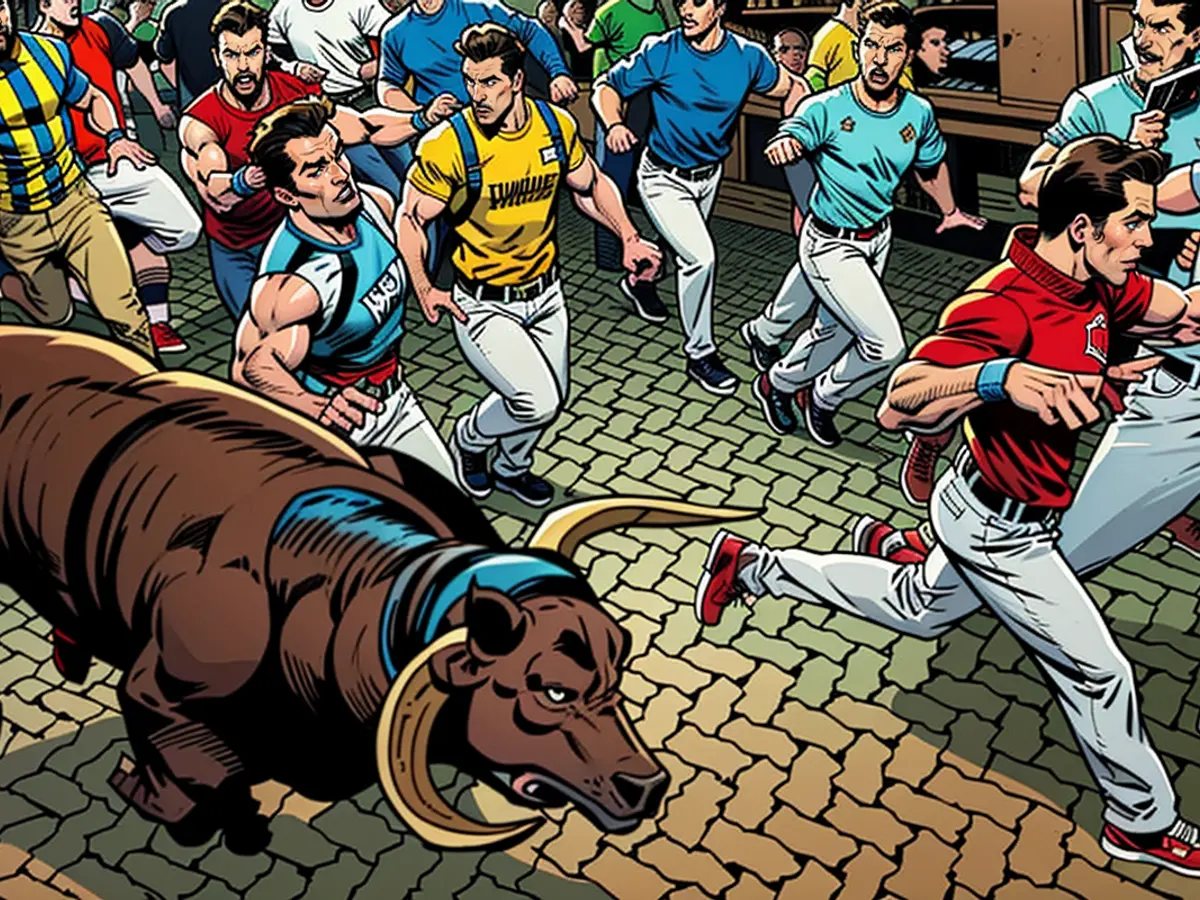Six people injured during bull run in Pamplona
For some, it is a centuries-old tradition, for others "medieval cruelty". Every year, the running of the bulls in Pamplona is once again contested. However, the eight-day traditional festival brings massive visitors and their money into the city.
Six people were injured during the first running of the bulls of the controversial Sanfermin-Festival in the northern Spanish Pamplona. As is usual since more than 400 years, they were running together with the bulls through the narrow streets of the Old Town. No one was seriously injured, only one patient had a skull trauma, and five had bruises, according to a health spokesperson speaking to the state TV-channel RTVE. In the coming seven days, there is one more running each day. For the bulls, it is always their last day alive, they die later in the bullring.
The bulls may look plump, but they can run faster than humans. The main challenge for the runners, predominantly younger men, is to get as close as possible to the 600 kilogram heavy fighting bulls without being gored.
The runners try to outrun the bulls on the 875-meter long stretch to the bullring. At some point, every runner will be overtaken by the animals and tries to hit them on the hindquarters. The running takes place over smooth and sometimes wet cobblestone pavement.
Constantly looking backward
Most falls occur because the runners constantly look backward in anticipation of the bulls. A stumble by one runner often causes several to fall. It becomes particularly dangerous when the bulls approach. The last fatal victim was in 2009.
Among the fans of the event is the Pamplona-born football star Nico Williams (21), who on Friday eliminated Germany from the European Championship with the Spanish national team. "I usually celebrate it every year. This time I can't. But if we make it to the final, it's perfectly fine," he told the sports newspaper "AS".
Animal rights activists protest
Criticism and protests are growing year by year. On Friday, the organizations PETA and AnimaNaturalis demonstrated against the nine-day festival in Pamplona and labeled the event "medieval cruelty". Animal rights activists have been calling for an end to bullfighting and generally all bloody bullfights for a long time.
Even before the event, there were demonstrations where participants carried placards with inscriptions such as "Torture is neither art nor culture" and "Animal cruelty is a national shame". "We know that there is a majority in society that rejects this animal cruelty not only in Pamplona, but throughout Spain, and has no interest in maintaining it - let alone with our taxes," said the AnimaNaturalis chairman Aida Gascon.
Despite the criticism and protests, the bloody Fiesta still has high economic conjuncture in the Navarra region. According to official figures, a total of 1.5 million participants were counted last year - a record. Hotels reported an average occupancy rate of 90% before the event, and rental properties were no longer available at normal prices. The visitors come from Spain and all over the world. For the city, it is a million-dollar business.
Tourists from international locations continue to flock to Spain each year, drawn by the controversy surrounding the running of the bulls in Pamplona. Despite concerns about animal welfare, the event attracts critics as well as supporters, with organizations like PETA and AnimaNaturalis labeling it as "medieval cruelty."







